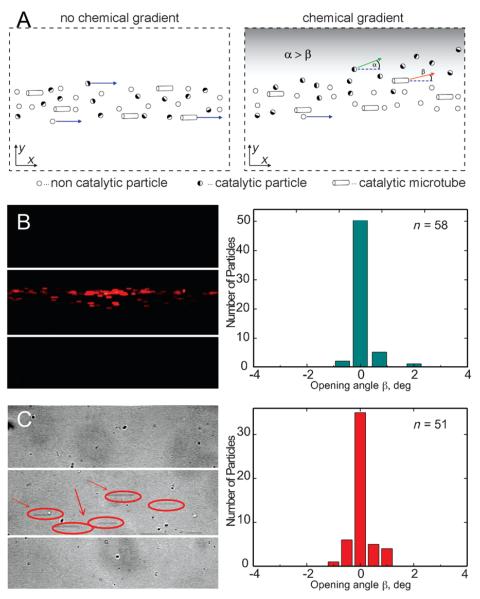Figure 2.
Principle of quantitative chemotactic analysis. A) Chemotactic behavior of the catalytic motors is quantified determining the opening angle β. Negative control experiments: B) non-catalytic fluorescent polystyrene particles in the gradient of hydrogen peroxide (10% H2O2 wt/wt in i1, 0% H2O2 in i3) do not experience chemotactic deviation of the motion towards fuel-rich area; Plot represents histogram from the opening-angle analysis for the non-catalytic particles, which shows zero opening angle. C) Catalytic tubular microjets, injected through the central inlet do not deviate (0% H2O2 in i1, 0% H2O2 in i3) if there is no fuel added to the solution. Histogram shows that majority of the motors do not experience any deviation. Injection flow rates are fixed to 140 μLh−1.

